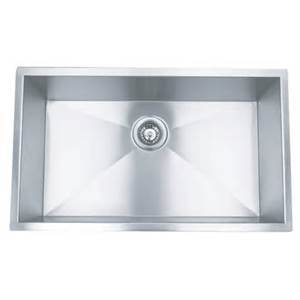Today you can find sinks in a variety of materials, cast iron, stainless steel, composite, ceramic and clay. The most common is Stainless Steel.

And the reason for that is simple, stainless steel is versatile and inexpensive. No matter the sink type, drop-in, undermount or apron stainless is a good material, sometimes the best.
However the term Stainless Steel is a misnomer. It doesn’t actually mean Stainless, but rather it refers to a property of the metal. The steel will actually stain less that other types of steel. The discovery actually came from a British metallurgist named Harry Brearly (1913 A.D.). He was trying to improve rust resistance on rifle barrels.
By adding different elements to the iron (such as Nickel, Titanium and Copper) an iron alloy was made that was rust resistant, thus the reason why it is an excellent choice for moisture rich environments such as a Kitchen.
Stainless steel is a generic term and it covers a wide array of steel types and corrosion resistance. It is organized by application (or corrosion resistance requirements) and gauge (thickness). So which stainless steel do you need in your kitchen?

Typically, the range for a kitchen sink is 15-24 gauge. Although you would think that the higher gauge means thicker it is actually opposite, the lower the number the thicker the steel. The ideal range for a sink is 16-20 gauge, the benefit being to a thicker sink is that it is less susceptible to dents and dinging over time.
So there you have it, now you know all about Stainless Steel kitchen sinks, but how you should you care for your sink?
Check out , How do I preserve my Stainless Steel sink?
www.patinstall.com – Certified IKEA Kitchen Installers
